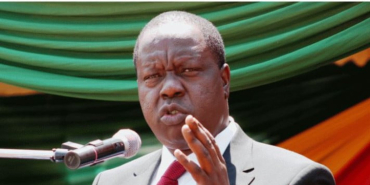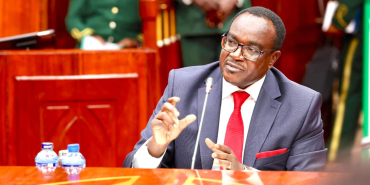How Gen Zs Could Disrupt Ethnic Politics in Kenya's 2027 Election

Kenya's electoral landscape is poised for a significant transformation in the 2027 General Election, with the emergence of Gen Z voters challenging the long-standing dominance of ethnic-based voting.
As this new generation prepares to enter the political arena, they possess the potential to disrupt the traditional electoral calculations that have defined presidential contests for decades. Since 2002, Kenya's political alliances have centred on regional blocs uniting under charismatic leaders, frequently with explicit pledges of power-sharing and cabinet representation. The Mt Kenya region has been pivotal, consistently delivering high voter turnouts for candidates supported by local power brokers.
This trend played a vital role in securing victories for President Mwai Kibaki in 2002, Uhuru Kenyatta in 2013 and 2017, and William Ruto in 2022—often in collaboration with the substantial voter base in the Rift Valley. In the 2013 poll, Kenyatta secured a razor-thin majority of 50.07 per cent to avoid a run-off, relying heavily on votes from Mt Kenya and the Rift Valley. The repeat of this regional strategy in 2017 yielded a widened margin, although the results were nullified, leading to a contentious re-election.
Again in 2022, Ruto’s campaign triumphed with a total of 7.1 million votes, of which 63 per cent came from Mt Kenya and North Rift counties. Regions such as Kiambu, Murang’a, Nyeri, Embu, and Nakuru delivered impressive turnouts, demonstrating their continued electoral significance. However, beneath this enduring structure, a growing undercurrent of dissatisfaction emerges. This shift is evident not through politicians or formal parties, but via the emergence of younger Kenyans identifying as leaderless, partyless, and tribeless.
This movement—principally composed of Gen Zs born between 1996 and 2012—has demonstrated political awareness and activism since the youth-led social protests in June last year. Mobilised primarily through digital platforms, these protests signalled a desire for systemic change beyond ethnic allegiances.
The Kenya National Bureau of Statistics projects that by 2027, more than 14 million Gen Z citizens will be eligible to vote, many for the first time. When combined with the 18–34 age bracket, their total numbers swell to 17.8 million.
This presents a demographic shift with substantial implications: their numerical strength surpasses the combined voting blocs that previously propelled presidential wins, yet their turnout in 2022 remained strikingly low. Despite forming 40 percent of the electorate, many refrained from voting, underscoring a disconnect between youth engagement and electoral participation.
Political analysts warn that unless this segment organises around a coherent political vision or a consensus candidate, its influence may diminish. Javas Bigambo, a governance commentator, observes, "Gen Zs will have historical influence in the 2027 elections and subsequent ones." He adds that their rejection of traditional mobilisation by politicians could usher in a new era, but only if they "coalesce around ideals, not sheer anger and amorphousness."
This ideological pivot—from personality cults to principles—could fundamentally reshape Kenya's electoral map. For decades, voting in the country has reflected near-unanimous regional preferences, dictated by influential leaders. In Mt Kenya and Rift Valley, turnout rates have approached and even exceeded 90 percent in past elections. Conversely, regions like Nyanza, Western, Coast, and Ukambani have consistently backed Raila Odinga, often with similar homogeneous loyalty.
During the 2022 race, Odinga garnered 769,424 votes from Ukambani and over 843,000 from Western Kenya. His tally of 6.9 million, although significant, fell short of Ruto's margin, which was buttressed by a strong showing in central Kenya and the Rift. These patterns reaffirmed the strength of ethnic alignment as a decisive factor—despite warnings that such politics perpetuate division and underdevelopment.
Gen Z’s rise, backed by digital literacy and exposure to global political movements, suggests a generational departure. Their leaderless approach, characterised by decentralised activism and social media engagement, may complicate traditional campaign strategies that depend on well-defined hierarchies and endorsements. While this evolution is promising in terms of democratic renewal, it also raises strategic questions for those hoping to court the youth vote in 2027.
A key challenge lies in bridging the gap between mobilisation and meaningful participation. The 2022 turnout revealed that eight million registered voters abstained from casting their ballot, many of them young people. Data from the Independent Electoral and Boundaries Commission (IEBC) confirms that the youth’s potential remains largely untapped, despite their critical mass. To harness their influence, analysts argue that political education must extend beyond civic awareness to practical leadership development.
Without unity around policy proposals or shared electoral goals, Gen Z risks fragmenting into ineffectual activism. As Bigambo cautions, "Now they should master the art of political power control and access."
Established politicians are likely to recalibrate their approach, seeking to incorporate youth-centric rhetoric while retaining regional loyalties. This balancing act—between modern ideals and enduring ethnic expectations—will shape campaign strategies in the lead-up to the election.
What is evident is that 2027 will not resemble any prior election. The notion of the “tyranny of numbers,” once used to describe predictable outcomes based on ethnic alliances, may no longer apply. Kenya’s youth, if sufficiently organised, could redefine the architecture of electoral competition.








Comments
A TRIBElist is TRIBElist…
Permalink
A TRIBElist is TRIBElist until He or She dies. *Therefore I aiN'T being Deceived by Gen-Z.
Add new comment